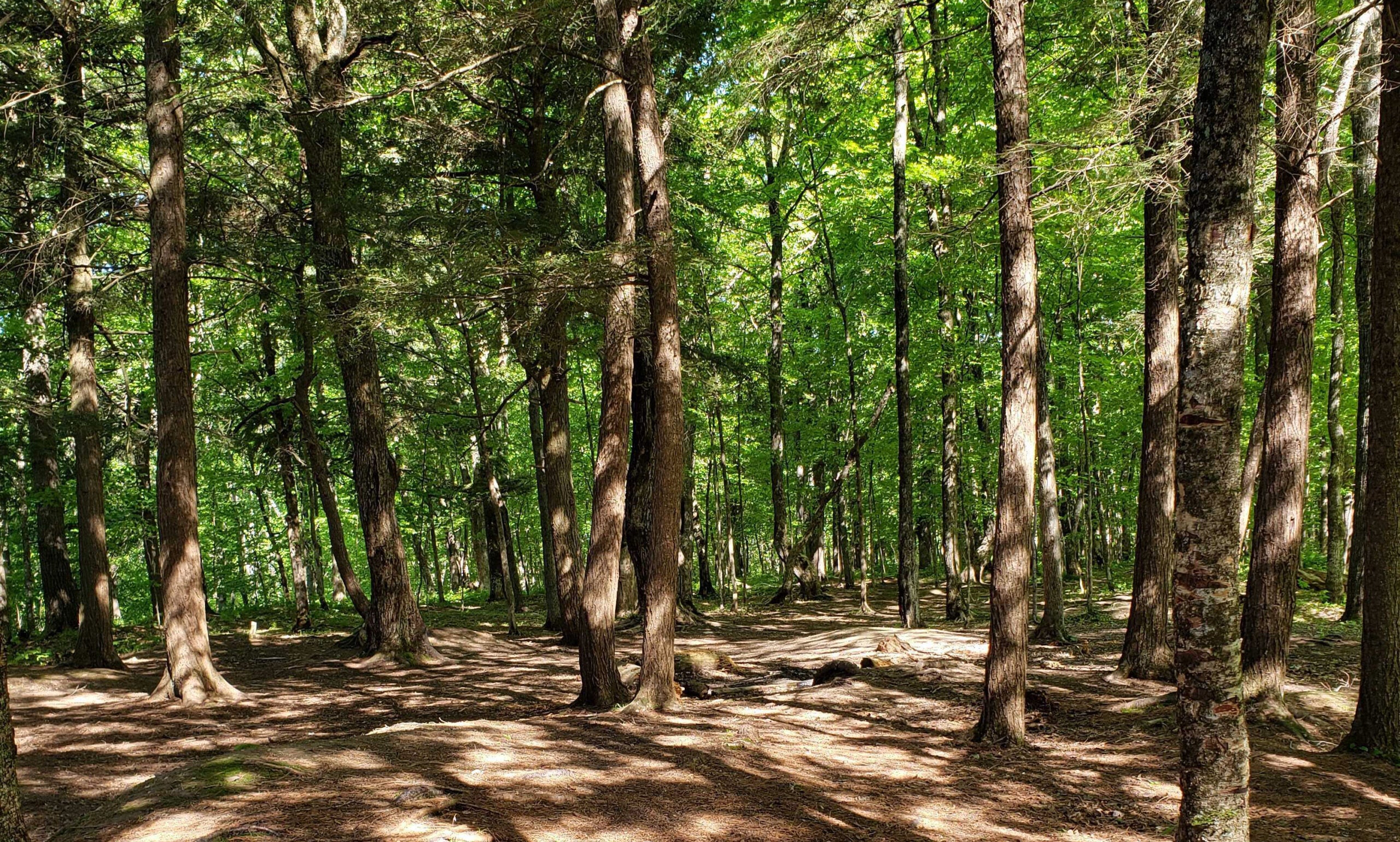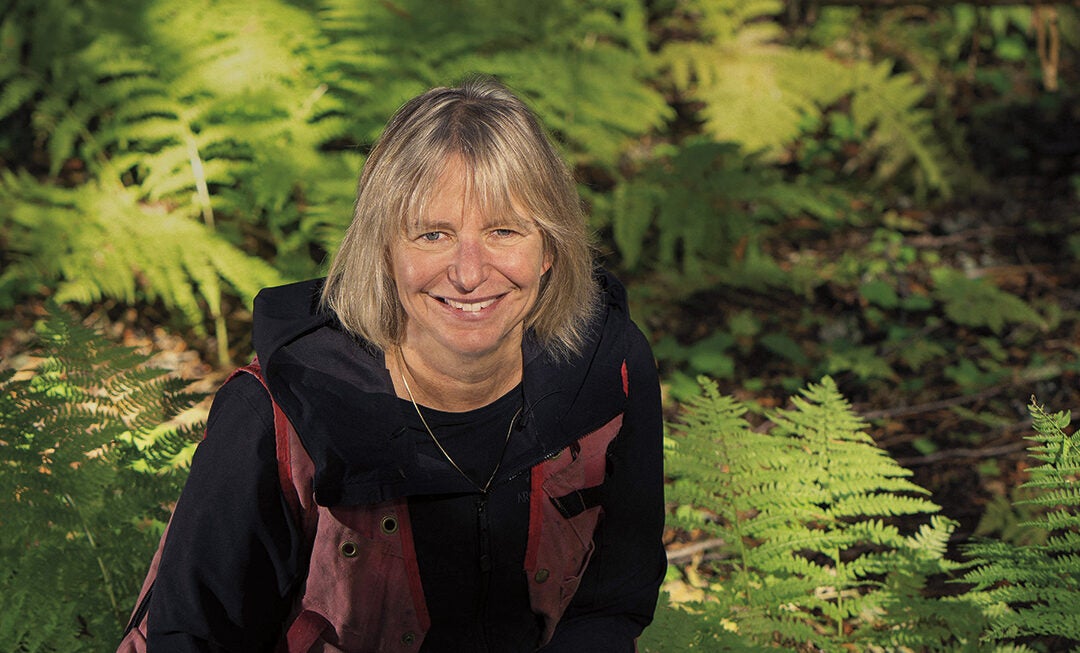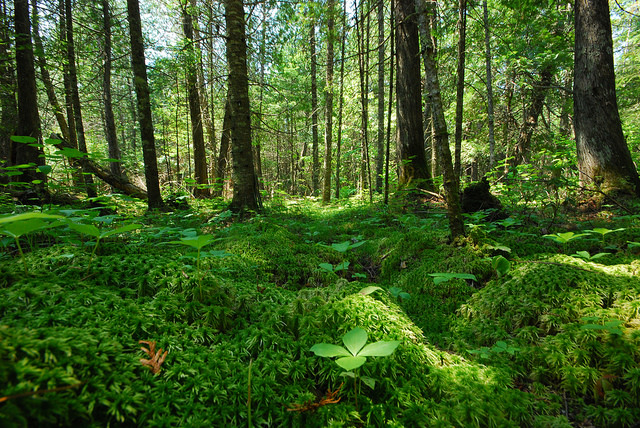More than 112 million acres of mature and old-growth forests have been identified on federal lands nationwide as the Biden Administration plans to craft a rule that would outline policies to protect them.
The move would affect mature and old growth stands that have been identified on federal lands in Wisconsin, including the Chequamegon-Nicolet National Forest and Apostle Islands National Lakeshore.
Federal agencies released its first national inventory Thursday as part of fulfilling an executive order issued by President Joe Biden on Earth Day last year. The age of older trees varied from a minimum of roughly 100 years old in the U.S. Forest Service region that includes Wisconsin, to 300 years old for regions out west. Under Biden’s directive, federal officials must coordinate strategies to analyze threats, reduce wildfire risks and develop climate-smart policies.
Stay informed on the latest news
Sign up for WPR’s email newsletter.
Environmental advocates in Wisconsin argue mature and old-growth trees must be protected because they’re crucial for fighting climate change, including Andy Olsen, a senior policy advocate with the Environmental Law and Policy Center.
“These forests sequester and store vast amounts of carbon and when they’re logged they release carbon,” Olsen said.
Most trees in Wisconsin were cut and cleared by loggers during the late 1800s and early 1900s. A decade ago, the Wisconsin Department of Natural Resources noted old-growth trees in the state are rare. Only about 1 percent of the forests had trees at least 120 years old, spanning around 77,000 acres.
Wisconsin still has small clusters and scattered stands of old-growth trees in the Chequamegon-Nicolet National Forest, which spans 1.5 million acres in northern Wisconsin. Olsen and other groups want to see a rule that would ban logging them on federal forest lands.
They’ve called on the Forest Service to halt projects, including the Fourmile Vegetation Management Project. The project aims to log nearly 12,000 acres in parts of Oneida, Vilas and Forest counties, and groups say two-thirds of stands are more than 80 years old. The Forest Service rejected groups’ request to suspend the project. U.S. Forest Service Chief Randy Moore said it would “promote the long-term health and productivity” in the area, as well as its potential to store carbon.
Jenn Youngblood, forest supervisor for the Chequamegon-Nicolet National Forest, said in a statement the forest is reviewing the president’s direction under the executive order and determining how implementation will occur. A spokesperson with the U.S. Forest Service said the inventory and definitions of older forests are intended to serve as a guide to help local land managers view mature and old-growth trees more consistently.
Members of Congress and the timber industry have urged the Forest Service to focus more on reducing wildfire risks by thinning tree stands in at-risk areas. The Federal Forest Resource Coalition, a timber industry group, said in a statement that the inventory shows the nation is not “running out of mature trees.”
“The Forest Service’s most recent science shows that fire, insects, and other factors are leading to large scale losses in mature forests, not timber harvest,” Bill Imbergamo, the coalition’s executive director, said.
The coalition also highlighted that the report found no single definition of which trees qualified as old-growth or mature forests, but rather working definitions. Federal officials said further scientific refinement was necessary due to diverse ecology, forest types and site characteristics.
“It’s going to be very tough to feather out which stands or which trees and so forth (are old-growth). We have to get down to a more regional level at the forest in this state, or individual national forests, or individual Bureau of Land Management districts,” said Ron Eckstein, chair of the public lands and forestry workgroup with Wisconsin’s Green Fire.
Despite that, he said the age of mature forests around 80 to 90 years old are increasing in Wisconsin. Eckstein said the question remains whether they’ll be allowed to become old-growth forests.
The DNR’s Chief State Forester Heather Berklund said the state needs to strike a balance between younger and older forests. While the upcoming rule would apply to federal lands, the agency will examine its inventory and the Forest Service’s working definitions of old-growth forests.
“We will be overlaying and comparing our inventory that we have here in the state to make sure that we’re aligned, so that we can get a better indication of what our acreage is and what’s considered that old-growth here,” Berklund said.
The U.S. Department of Agriculture Under Secretary for Natural Resources and the Environment Homer Wilkes said Thursday that forests are “struggling to keep up with the stresses of climate change” from fires to insect infestations.
“It is clear that we must adapt quickly,” Wilkes said in a statement.
The administration said it’s asking for public input on policies to protect, conserve and manage national forests for climate resilience as it plans to propose a rule. People must submit comments by June 20.
Program aims to protect older trees and store more carbon
As the Biden administration seeks to protect old growth on federal lands, the American Forest Foundation has announced the expansion of a program for private landowners in northern Wisconsin that’s intended to protect older trees and diversify forests.
The Family Forest Carbon Program, a partnership with The Nature Conservancy, has expanded enrollment for landowners in Ashland, Iron and Vilas counties. The program seeks to expand access to carbon markets for those who own at least 30 acres of land. Around 68 percent of forest land in the state is privately owned with families owning around 9.7 million acres.
“The program provides annual payments to our enrolled landowners to follow improved forest management practices that have been scientifically demonstrated to enhance carbon sequestration and storage over business as usual,” Jen Simoni, director of landowner engagement at the American Forest Foundation, said.
The practices would include limiting the amount of timber that can be harvested so trees can grow older and store carbon longer. Simoni said they would quantify the additional carbon that’s stored from enrolled properties and turn it into a carbon credit that would be sold on behalf of the landowners. Landowners would receive payments of $10 per acre per year for practices to protect old growth stands, according to Matt Dallman, deputy state director for The Nature Conservancy in Wisconsin.
Dallman said carbon markets are currently too expensive for family landowners to access. He said the program gives them access to financial resources that they typically wouldn’t be able to utilize.
“It’s about looking at nature’s ability to be a climate solution, and forests are some of our best, most efficient carbon sequestration systems out there,” Dallman said.
As part of practices to grow mature forests, Dallman said the program is looking for landowners who have forests where at least 50 percent are made up of hardwood stands like sugar maple, basswood and ash. They also have to meet certain volumes of 100 square feet of timber stands per acre. If they qualify, landowners would sign 20-year contracts. They would also receive technical assistance from foresters to incorporate management practices.
So far, Dallman said the program is working with 15 eligible landowners who have shown interest in the program and own around 2,300 acres of forest land. He said it’s looking to move forward with them on contracts in the next several months. Simoni said they hope to expand the program to a larger region across northern Wisconsin, Michigan and Minnesota this summer.
The program also aims to increase the number and diversity of trees that remain after timber harvests. More information about the program is available online.
Wisconsin Public Radio, © Copyright 2025, Board of Regents of the University of Wisconsin System and Wisconsin Educational Communications Board.


